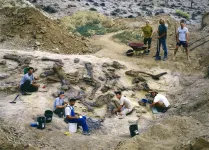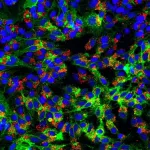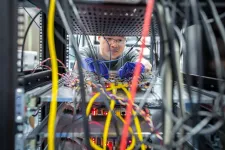(Press-News.org) MADISON, Wis. -- Mexican wolves in the American Southwest disappeared more quickly during periods of relaxed legal protections, almost certainly succumbing to poaching, according to new research published Wednesday.
Scientists from the University of Wisconsin-Madison found that Mexican wolves were 121% more likely to disappear -- despite high levels of monitoring through radio collars -- when legal rulings permitted easier lethal and non-lethal removal of the protected wolves between 1998 and 2016. The disappearances were not due to legal removal, the researchers say, but instead were likely caused by poachers hiding evidence of their activities.
The findings suggest that consistently strong protections for endangered predators lead to reduced poaching, contrary to theories that legalizing lethal removal might reduce the motivation to poach. Instead, the scientists say, strong protections could signal both the value of endangered predators and the government's intent to enforce protections. However, exactly how government policies ultimately influence poaching activity remains unclear.
"Top predators are very important to healthy ecosystems," says Adrian Treves, a UW-Madison professor of environmental studies who oversaw the new research. "They are imperiled globally by human activities. And among human-caused mortality, poaching is the leading cause."
Treves, graduate student Naomi Louchouarn and postdoctoral researcher Francisco Santiago-Ávila published their findings March 10 in the Royal Society Open Science journal. They collaborated with David Parsons, a former U.S. Fish and Wildlife Service agent and a member the Project Coyote science advisory board, to perform the analysis.
The new report comes on the heels of the federal government's delisting of the grey wolf in November 2020 under the Endangered Species Act, which reduced protections for the carnivores.
The Mexican wolf population, a subspecies of the grey wolf, is an ideal candidate for studying the effect of government policies. Thanks to intensive reintroduction efforts, more than half of the wolves are monitored through tracking collars, which provide high-quality data on the fate of individual wolves. Policies changed multiple times over roughly two decades, creating a natural experiment that researchers can use to observe how more relaxed or stringent protections affected wolf populations.
The Treves lab asked how two distinct changes in federal protections for Mexican wolves affected the mortality of the predators in the ensuing years. From 2005 to 2009, and again from 2015 until the end of the study period in 2016, federal regulators relaxed protections for the wolves. These new policies allowed agencies to more readily remove by lethal means wolves that were deemed threats to people or livestock. Public hunting was never legalized.
The researchers found that the only cause of lost wolves that changed significantly during times of reduced protections was a category known as lost-to-follow-up, or LTF. The LTF category includes all wolves that can no longer be accounted for. LTFs can be caused by radio collar battery failures, or by wolves migrating beyond the monitored area.
Yet, the U.S. Fish and Wildlife Service found few, if any, migrants out of the recovery area and LTF events occurred significantly earlier than the expected battery life of radio collars. Those results mean that these two common causes of LTF status likely can't account for the large increase in wolves lost-to-follow-up during years of relaxed protections. The Treves group also found no evidence of changes in diseases or climate that correlated with policy changes and would increase disappearances.
Instead, they believe that the increased risk of disappearance comes from poachers who act to hide their activities by destroying radio collars and hiding carcasses. Without that evidence, however, federal agencies can't confirm a cause of death, forcing them to declare the wolves lost-to-follow-up.
Agency removal of wolves and confirmed poaching activities did not vary significantly based on policy period.
"The fact that these changes line up with these periods really tells you a lot. The wolves don't understand that policy changed, but people do," says Louchouarn. "Yet the disappearances did increase, so somebody was changing their behavior. These methods really helped us to make that connection to likely poaching."
To reduce sources of bias, the researchers developed their methods and submitted them to peer review before completing their analysis. This pre-review encourages more transparent publishing of scientific findings, regardless of the final results.
"Our findings suggest that there is no evidence for the tolerance killing hypothesis, where allowing the killing of more individuals is going to increase the tolerance for the species and therefore reduce killings," says Santiago-Ávila, who originally developed the data analysis methods to study Wisconsin's wolf population. "There is a very minimal reduction in the poaching that gets reported. But that's only because the poaching gets translated to lost individuals, which we believe represents underreported poaching."
The researchers say government agencies should reassess their assumptions that lethal removal can ultimately lead to better outcomes for the wolves. Federal policies are developed based on scientific research, so reports like this one and a previous study of Wisconsin's wolf population could help federal agencies reevaluate for the future.
"Protection is the thing that's reducing poaching," says Treves.
INFORMATION:
--Eric Hamilton,
(608) 263-1986,
eshamilton@wisc.edu
Additional Contacts:
Naomi Louchouarn,
louchouarn@wisc.edu; Francisco Santiago-Ávila,
santiagoavil@wisc.edu
Fossil sites sometimes resemble a living room table on which half a dozen different jigsaw puzzles have been dumped: It is often difficult to say which bone belongs to which animal. Together with colleagues from Switzerland, researchers from the University of Bonn have now presented a method that allows a more certain answer to this question. Their results are published in the journal Palaeontologia Electronica.
Fossilized dinosaur bones are relatively rare. But if any are found, it is often in large quantities. "Many sites contain the remains of dozens of animals," explains Prof. Dr. Martin Sander from the Institute ...
For the first time ever, a Northwestern University-led research team has peered inside a human cell to view a multi-subunit machine responsible for regulating gene expression.
Called the Mediator-bound pre-initiation complex (Med-PIC), the structure is a key player in determining which genes are activated and which are suppressed. Mediator helps position the rest of the complex -- RNA polymerase II and the general transcription factors -- at the beginning of genes that the cell wants to transcribe.
The researchers visualized the complex in high resolution using cryogenic electron microscopy (cryo-EM), ...
Magnetic resonance imaging (MRI) is already widely used in medicine for diagnostic purposes. Hyperpolarized MRI is a more recent development and its research and application potential has yet to be fully explored. Researchers at Johannes Gutenberg University Mainz (JGU) and the Helmholtz Institute Mainz (HIM) have now unveiled a new technique for observing metabolic processes in the body. Their singlet-contrast MRI method employs easily-produced parahydrogen to track biochemical processes in real time. The results of their work have been published in Angewandte ...
At the heart of Cygnus, one of the most beautiful constellations of the summer sky, beats a source of high-energy cosmic ray particles: the Cygnus Cocoon. An international group of scientists at the HAWC observatory has gathered evidence that this vast astronomical structure is the most powerful of our galaxy's natural particle accelerators known of up to now.
This spectacular discovery is the result of the work of scientists from the international High-Altitude Water Cherenkov (HAWC) gamma-ray observatory. Located on the slopes of the Mexican Sierra Negra volcano, the observatory records high-energy particles and photons flowing from the abyss of space. In the sky of the Northern Hemisphere, their brightest source is the region known as the Cygnus Cocoon. At the HAWC, it was established ...
Geologists have long thought tectonic plates move because they are pulled by the weight of their sinking portions and that an underlying, hot, softer layer called asthenosphere serves as a passive lubricant. But a team of geologists at the University of Houston has found that layer is actually flowing vigorously, moving fast enough to drive plate motions.
In their study published in Nature Communications, researchers from the UH College of Natural Sciences and Mathematics looked at minute changes in satellite-detected gravitational pull within the Caribbean and at mantle tomography images - similar to a CAT Scan - of the asthenosphere under the Caribbean. They found ...
Alexandria, Va., USA -- Oral mucositis and taste dysfunction (dysgeusia) occurs in nearly all patients receiving head and neck radiotherapy and tremendously affects the quality of life and treatment outcome. The study "LiCl Promotes Recovery of Radiation-Induced Oral Mucositis and Dysgeusia" published in the Journal of Dental Research (JDR), investigated the hypothesis that lithium chloride (LiCl) can promote the restoration of oral mucosa integrity and taste function after radiation.
LiCl is a potent activator of a key cell signaling pathway called Wnt/β-catenin that is critical for the development, regeneration and function of many tissue types. ...
BUFFALO, N.Y. - A University at Buffalo researcher's recent work on dyslexia has unexpectedly produced a startling discovery which clearly demonstrates how the cooperative areas of the brain responsible for reading skill are also at work during apparently unrelated activities, such as multiplication.
Though the division between literacy and math is commonly reflected in the division between the arts and sciences, the findings suggest that reading, writing and arithmetic, the foundational skills informally identified as the three Rs, might actually overlap in ways not previously imagined, let alone experimentally validated.
"These findings floored me," said Christopher McNorgan, PhD, the paper's author and an assistant professor in UB's Department of Psychology. "They elevate the ...
Researchers at Princeton have determined how five cellular proteins contribute to an essential step in the life cycle of hepatitis B virus (HBV). The article describing these findings appeared March 11, 2021 in the journal Nature Communications.
Viruses have been with us, shaping our lives, societies and economies for millennia. While some viruses rapidly explode onto the world stage, others smolder in our communities for decades, shattering lives but making few headlines. Hepatitis B virus hasn't caused any nationwide lockdowns or stock market crashes because it is slow to spread from person to person and is rarely immediately fatal. It is nonetheless incredibly damaging because it can establish lifelong chronic infection ...
RESEARCH TRIANGLE PARK, N.C. -- New Army-funded research could help lay the groundwork for future quantum communication networks and large-scale quantum computers.
Researchers sent entangled qubit states through a communication cable linking one quantum network node to a second node.
Scientists at the Pritzker School of Molecular Engineering at the University of Chicago, funded and managed by the U.S. Army Combat Capability Development, known as DEVCOM, Army Research Laboratory's Center for Distributed Quantum Information, also amplified an entangled state via the same cable first by using the cable to entangle two qubits in each of two nodes, then entangling these qubits further with other qubits in the nodes. The peer-reviewed journal ...
Atherosclerosis is the underlying condition that causes heart attacks and strokes. Researchers at Radboudumc in the Netherlands have discovered a protein that appears to play an important role in atherosclerosis. The protein is called Prosaposin, and its role in atherosclerosis was sofar unknown. "We identified Prosaposin as a new potential target for the Science Translational Medicine.
Atherosclerosis is caused by cholesterol that builds up in the vessel wall and triggers chronic inflammation. It has been well established that cholesterol lowering drugs help to treat atherosclerosis. Recent research has shown that inhibiting inflammation can also help to prevent heart attacks and ...




